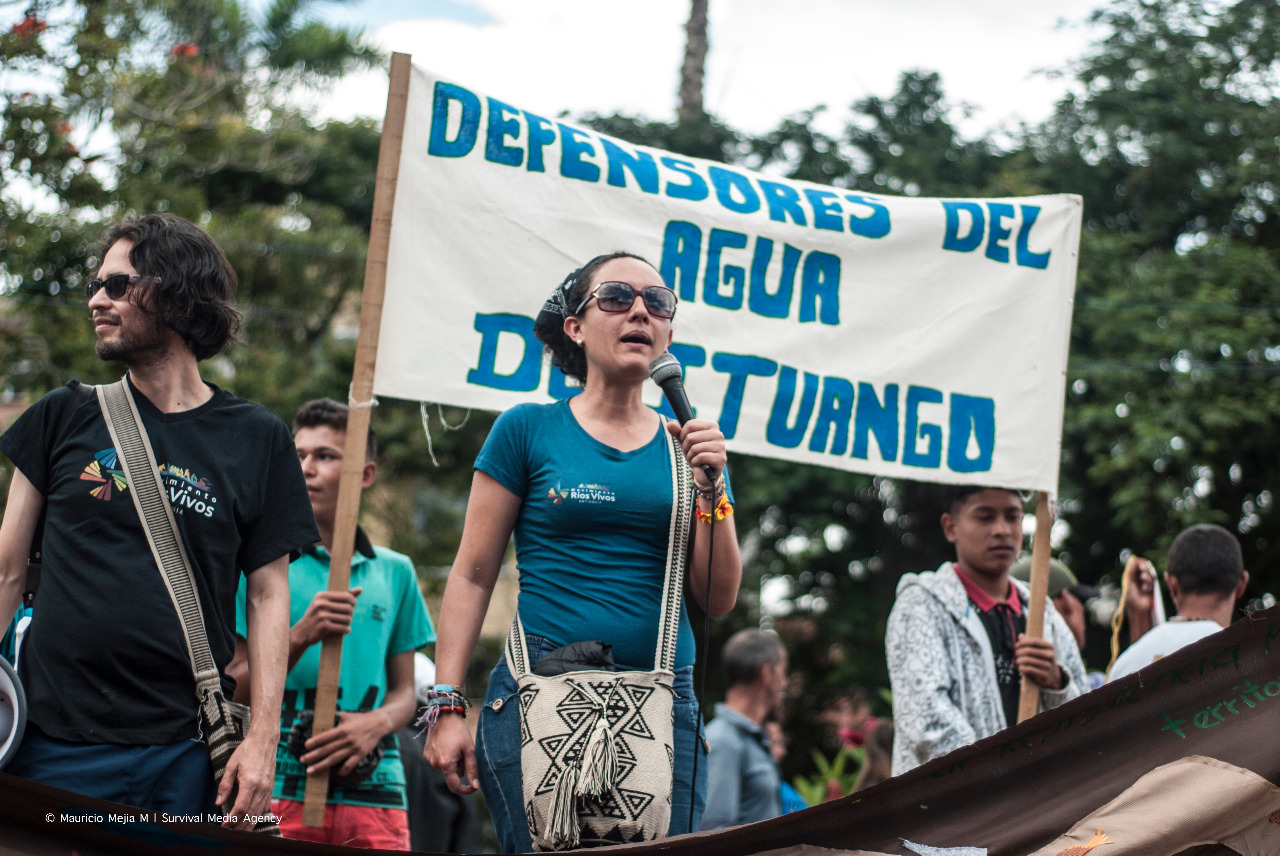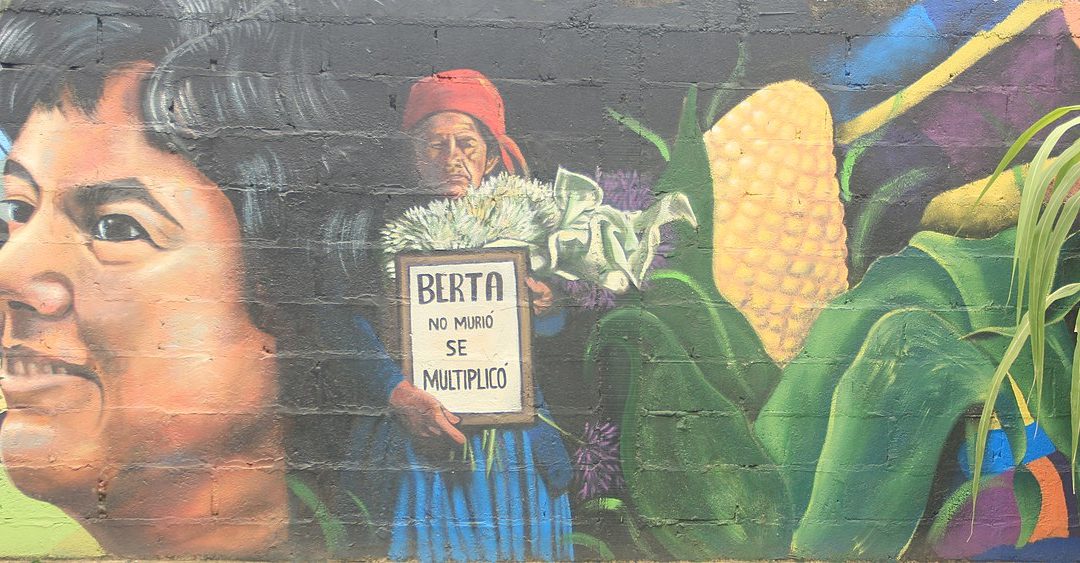Editor’s note: This article is a call for courage in the face of adversity, apathy, and violence. Two hundred and seven environmentalists were murdered last year—at least. Each fallen land defender is a hero. To save the planet, we must be willing to take risks and make sacrifices.
States, corporations, and vigilantes use violence because it is brutally effective. Our best defense against murder and other intimidation techniques including detention, torture, surveillance, harassment, and infiltration is solidarity, organization, and strategy.
Deep Green Resistance activists are active in many of the most dangerous parts of the world, where environmentalists are murdered regularly. This is why we advocate for security culture and teach techniques regarding privacy, anonymity, personal safety, and self-defense. As land defenders, we must be prepared. This work is dangerous, and by being prepared, we enable action.
by Ashoka Mukpo / Mongabay
- An analysis by Front Line Defenders and the Human Rights Defenders Memorial recorded at least 358 murders of human rights activists globally in 2021.
- Of that total, nearly 60% were land, environment or Indigenous rights defenders.
- The countries with the highest death tolls were Colombia, Mexico and Brazil.
- Advocates say the figure is likely far higher, as attacks on land and environment defenders in Africa often go unreported.
At least 358 human rights defenders were killed in 2021, according to an analysis by Front Line Defenders (FLD) and the international consortium Human Rights Defenders Memorial. Of the total, nearly 60% were land, environment or Indigenous rights defenders, and more than a quarter were themselves Indigenous. Researchers who worked to compile the data said the high proportion of activists killed while fighting against threats to community land and natural resources represented a continuation of a years-long trend.
“Unfortunately, in most if not all of the places where this is happening, there’s just flat-out impunity for these attacks,” said Andrew Anderson, the director of FLD.
As was the case in 2020, the deadliest country for human rights defenders was Colombia, with 138 verified killings — more than a third of the global total. Mexico recorded 42 deaths, the second-highest number, and Brazil came in third with 27 killings, 19 of them land rights defenders.
Anderson told Mongabay that many of the murdered activists were targeted due to their opposition to dams, illegal logging, mining operations, and other extractive projects linked to powerful interests in their countries.
“Activists who are working to document what’s happening and challenge government-driven narratives are at extreme risk,” he said.

The Ríos Vivos movement in Antioquia, Colombia. The communities affected by the Hidroituango dam mobilize and protest in defense of the climate and against the use of fossil fuels. Colombia has topped the list of deadliest countries for human rights defenders for years. Image by Mauricio Mejia Muñoz via Flickr (CC BY-NC-SA 2.0).
Murders of land, environment and Indigenous rights defenders were recorded in 15 countries: Argentina, Brazil, Burkina Faso, Chile, Colombia, Ecuador, Guatemala, Honduras, India, Kenya, Mexico, Nicaragua, Peru, the Philippines and Thailand.
Colombia has topped the list of deadliest countries for human rights defenders for years, partly due to violent conflicts over control of remote smuggling routes and land that was previously controlled by the guerrilla group FARC, which disbanded following a peace deal with the government in 2016. Since then, paramilitary groups vying to fill the vacuum left by the FARC have targeted Indigenous groups resisting encroachment by warring factions onto their traditional territories.
In Mexico, five Indigenous land and water defenders from Paso de la Reyna in Oaxaca state were killed in the first three months of 2021 alone, including Fidel Heras Cruz, who had worked to expose threats to the Verde River from a hydroelectric dam and illicit rock quarrying. FLD said in recent years the Mexican government has given the military a greater role in the implementation of development projects, in part to intimidate Indigenous and other communities who object to those projects.
Many of those who were killed spent years facing threats and harassment as a result of their work, suggesting that if their governments had acted more forcefully on their behalf, their deaths could have been avoided. In the Mexican state of Sonora, for example, José de Jesús Robledo Cruz and María de Jesús Gómez were killed in April 2021 after organizing a campaign against Mexico’s largest gold-mining company. It wasn’t the first time the married couple had been targeted: In 2017, they were kidnapped and tortured by unknown assailants dressed in army fatigues. When their bodies were discovered last year, a note with the names of 13 other activists was attached to one of them.
Nearly three-quarters of the human rights defenders killed in Mexico were protecting land, the environment or Indigenous rights.

As staggering as the death toll is on its own, the true figure is likely much higher. Front Line Defenders relies on local partners to report on killings, and generally looks for at least two sources to verify each victim’s identity, background, and the cause of death. In countries where there are significant constraints on the ability of local human rights groups to gather and publicize data, deaths and other forms of retribution against defenders can simply go unrecorded.
Across the entire continent of Africa, for example, only 20 deaths were noted — less than half the total for Mexico alone. Advocates from the continent say that’s almost certainly an undercount.
“Because of the remote nature and way in which these people live and where they exist, you can hardly find any information,” said Alfred Brownell, a Liberian activist who won the Goldman Environmental Prize in 2019, two years after he was forced to flee his country.
Anderson said that in Central and South America, human rights reporting networks are more robust than in Africa, where media coverage in rural areas where extractive projects take place is often limited.
“In pretty much every country in Latin America you have an umbrella organization that’s a network of human rights defenders. Sometimes you have multiple networks, whereas in West Africa, with a couple of exceptions those entities don’t yet exist,” he said.
The report highlighted the death of Joannah Stutchburry, a 67-year-old environmental advocate who was shot to death in Kenya last year after campaigning against development in the Kiambu forest national park. And in northern Uganda, police and military forces shot and wounded 16 members of the Paten clan who were protesting against an irrigation project that they say is threatening their farmland.
“These are our first responders who are responding in a very effective way to the climate crisis,” Brownell said. “These are our democracy heroes who aim for transparency and accountability, and are blowing the whistle on these violations. We have to secure this firewall and protect them.”
Banner image: A mural in Palma, Majorca (Chixoy via Wikimedia Commons). Berta Cáceres was a Honduran (Lenca) environmentalist and indigenous leader fighting dams in Central America. She was assassinated in 2016 by armed men, several of whom were trained at the U.S. military’s infamous “School of the Americas” (now known as WHINSEC) at Fort Benning, Georgia.


In modern society, those of us who advocate for the Earth and all the life here are a tiny minority. The vast majority of people are anthropocentric, or human supremacists as Derrick Jensen puts it. They don’t care about killing and destroying anyone or anything that’s not human, at least not as much as they care about maintaining their unnatural destructive lifestyles. These murders are the ultimate result of that attitude.
When I was an Earth First! campaigner, we realized that we could be killed at any time doing civil disobedience or monkeywrenching, or even for just advocating for the Earth and its nonhumans against destructive human activities. My mother once told me that she feared that I would end up like Dian Fossey because of my work with Earth First! In this upside down world, those of us who defend and advocate for life have our own lives endangered. Obviously it shouldn’t be this way, but this is the reality we face, and it won’t change until the bad anti-life attitude of humans changes.